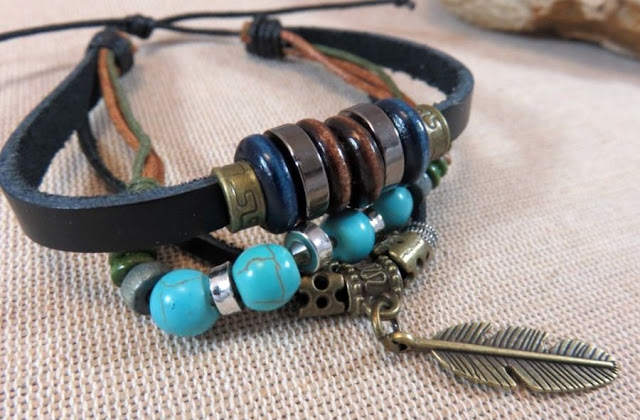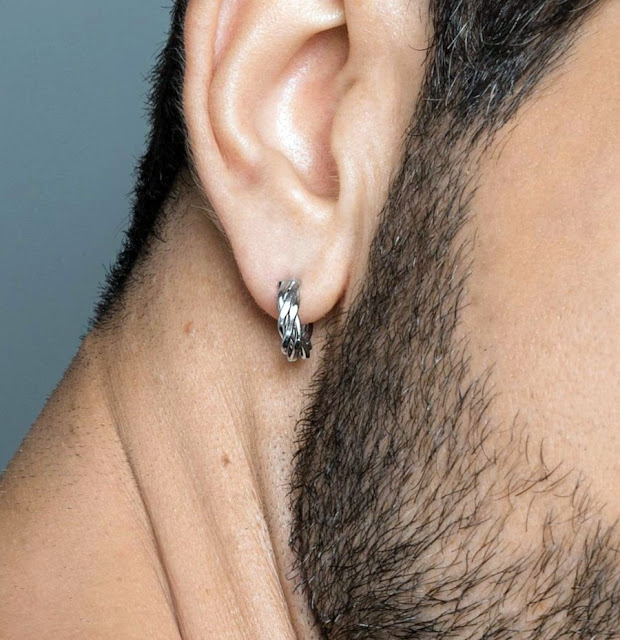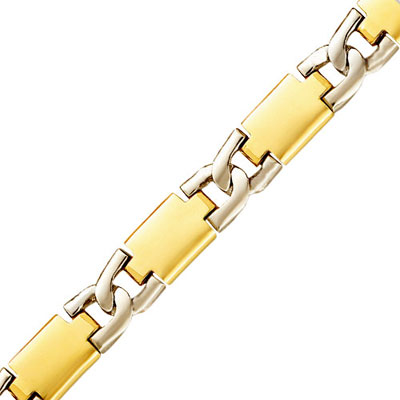
Identifying Authentic Native American Jewelry
Some Native American jewelry that looks authentic is really just a clever imitation. Here are some ways to tell the difference.
- Price - authentic Native American jewelry will usually command a high price. Less expensive pieces, even when crafted by Native Americans, are usually novelty items.
- Materials - native American artisans use only the finest materials in creating their works of art. Expect to find sterling silver and fine gemstones in the best of them.
- Appearance - if any particular piece looks cheaply made, it probably is. Fine Native American jewelry will demonstrate a certain stability that says it was made to last.
- Artist's Hallmark - the Native American artisan who takes pride in his work will usually stamp each piece with his hallmark. Jewelry that is missing this mark may or may not be authentic.
- Certificate of Authenticity - a reputable seller will provide the buyer with a certificate of authenticity stating his business' full name, address, and phone number. It should also include the name of the artist and the tribe with which he is affiliated.
Handmade vs. Handcrafted Native American Jewelry
Although most use the two terms interchangeably, some feel there is a distinct difference between handmade and handcrafted Native American jewelry. The distinction, if it actually exists, concerns the materials used in their construction. Proponents of this philosophy believe that, for any piece of jewelry to receive a handmade classification, the artisan who created it must have used nothing but raw materials in its construction. If a certain piece of jewelry incorporates such prefabricated elements as clasps and hooks, they consider it handcrafted, not handmade.

Common Native American Jewelry-Making Tribes
Those in the know can tell by looking exactly which group of Native Americans crafted a particular piece of jewelry. Each type possesses its own distinctive characteristics.
Native American Jewelry of the Hopi
Prior to the arrival of the Spanish silversmiths, early Hopi Indian jewelry was crafted from nothing more than turquoise, shells, stones, wood, and seeds. Since the 1930s, though, the Hopis have gained particular recognition for their signature style: silver overlays. This understated jewelry begins with a sheet of oxidized silver. The Hopis finely emboss this sheet with hammers and chisels and top it with another layer into which they have cut an intricate design. After soldering the two pieces together, they normally polish the finished piece with steel wool until they have achieved a satiny sheen.
Native American Jewelry of the Navajo
Navajo Indian jewelry usually announces its showy presence by a heavy use of silver combined with large pieces of turquoise. The large proportion of silver to stone is a good indication that the jewelry is almost certainly of Navajo origin. Navajo artisans also make inlay jewelry, but their version of this style normally displays a heavier and rougher aspect than that created by other tribes. Most of their silver bracelets and belt buckles feature a satiny finish, and the background of their silver overlays normally displays a heavier texture compared to that found in their Hopi counterparts.
Native American Jewelry of the Santo Domingo Pueblo
The Santo Domingos were the first to create inlaid mosaic designs. Today, Santo Domingo Indian jewelry often features shells and authentic turquoise imbedded in sterling silver. They are also famous for rolling ground shells and turquoise into heishi beads in the tradition of their ancestors. The Santo Domingo Indians rarely stamp their work with a hallmark, so their highly prized jewelry can be hard to identify.

Native American Jewelry of the Zuni
The Zuni Indians take pride in the intricacy of their stonework and the relatively light and open aspect of their jewelry's silver components. Zuni Indian jewelry will often feature a centrally positioned turquoise surrounded by one or more other types of stone. Any Native American jewelry incorporating elaborate inlay work or clusters of finely cut stones is probably of Zuni origin.
Popular Materials Used in Native American Jewelry
Artisans who specialize in authentic Native American jewelry almost always utilize materials that occur naturally in the environment.
- Materials From the Earth - Various metals, hardwoods, stones, shells, and vegetable fibers.
- Animal Products - Bones, hides, and teeth.
- Man-Made Objects - Quillwork and beadwork.
Silver
When thinking of Native American jewelry, many people immediately envision a bright turquoise stone surrounded by a band of shining silver. These artisans do favor silver for fashioning their jewelry, and that has been true since invading Spanish silversmiths first introduced their skills to the Americas. The quality of silver varies widely, and this can have a great effect on the price of the jewelry in which it is used. This chart will explain the differences.
Grade |
Parts Silver |
Parts Other Metals |
Description |
|---|---|---|---|
| Sterling Silver | 92.5 | 7.5 | The FTC has decreed that any jewelry marked "silver" must be composed of sterling. |
| Coin Silver | 90 | 10 | Early Native Americans melted down American and Mexican coins to obtain the metal for crafting their jewelry. |
| German or Nickel Silver | 0 | 100 | This metal, composed of 60 parts copper, 20 parts nickel, and 20 parts zinc, is not really silver at all. However, some Southern Plains and Sioux tribes have traditionally worked with it, and many of them still do. |
Turquoise
The bluish-green mineral known as turquoise is a byproduct of the copper mines. In the eyes of the Navajo and Apache tribes, the powers of turquoise will aid them in hunting wild animals and discovering sources of water. The colors of turquoise can vary. Varieties that are bluer in tone possess a greater purity and command a higher price. The less expensive turquoise stones contain some iron and have a greenish tint. Although many of these stones boast a uniformity of color, some contain gray or brown veining or spiderweb patterns that add to their value.








